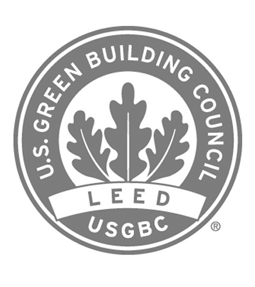Questions we receive regarding the Biomop.

The Leadership in Energy and Environmental Design (LEED) Green Building Rating System™ encourages and accelerates global adoption of sustainable green building and development practices through the creation and implementation of universally understood and accepted tools and performance criteria.
LEED is a third-party certification program and an internationally accepted benchmark for the design, construction and operation of high performance green buildings. It provides building owners and operators the tools they need to have an immediate and measurable impact on their buildings' performance.
LEED promotes a whole-building approach to sustainability by recognizing performance in five key areas of human and environmental health: sustainable site development, water efficiency, energy efficiency, materials selection, and indoor environmental quality.
QUESTION: What is is our definition of biodegradability?
ANSWER: We have independently tested this product under conditions in a commercial compost and determined that the Biomop starts to breakdown in two weeks and is almost fully degraded by the end of 6 to 8 weeks and can be used as compost in a soil mixture.
QUESTION: Is the Biomop a pro-active green choice for professional cleaners in an institutional environment?
ANSWER: Yes. There is no bio-accumulative exposure to chemicals, no volatile organic compounds, no hazardous waste and low energy inputs used to clean because no chemicals or water are used to either launder the product or clean with it.
QUESTION: Can the Biomop be used wet?
ANSWER: No. It is used dry as a dusting sheet or dust mop. Purasolutions has other low cost alternatives for institutions wanting to wet mop.
QUESTION: What is cleaning for health mean?
ANSWER: Routine cleaning manages indoor air quality by removing the pollutants. The ease of which the Biomop can be deployed encourages more frequent cleaning. The low cost and convenience means the product can be used in a one room/one dust mop strategy to clean patient rooms thereby minimizing cross contamination and increasing the safety of workers and patients. In a critical health care institution cleaning for health is putting the health of the patient first.
QUESTION: I don't like the fact that we are encouraging disposable products. Am I really better off using a dispensable product for dust mopping?
ANSWER: Every human activity no matter how environmentally sound is at best a shade of green. We believe that cleaning for health and safety is every bit as important as the environmental impact and product performance. Several years ago we ourselves realized that in order for a product to be considered a single use it must be biodegradable in order to reduce the environmental impact of the cleaning activity. This is why we tested this product extensively using an third party independent lab in Sweden to ensure that it biodegrades and is non-toxic to plants, animals and soil organisms. We also discovered when cross-contamination in a hospital or institutional setting occurs it is because something in the process prevents staff from taking the correct approach. Traditional cleaning methods encourage multiple uses because replacing the dust mop is not convenient and there is an extra expense to provide additional pars to support workflow from the cleaning task to the laundry. The Biomop's advantage is the fact that the mop can be replaced after every patient room without the high cost of such a strategy.
QUESTION: Can the Biomop be used to earn LEED certification?
ANSWER: Cleaning with Biomop uses no chemicals and is inert of any VOCs so it can earn points towards LEED certification in either new construction or existing building upgrades.
Regular dust mopping with the Biomop reduces water consumption and contributes to improved indoor air quality.